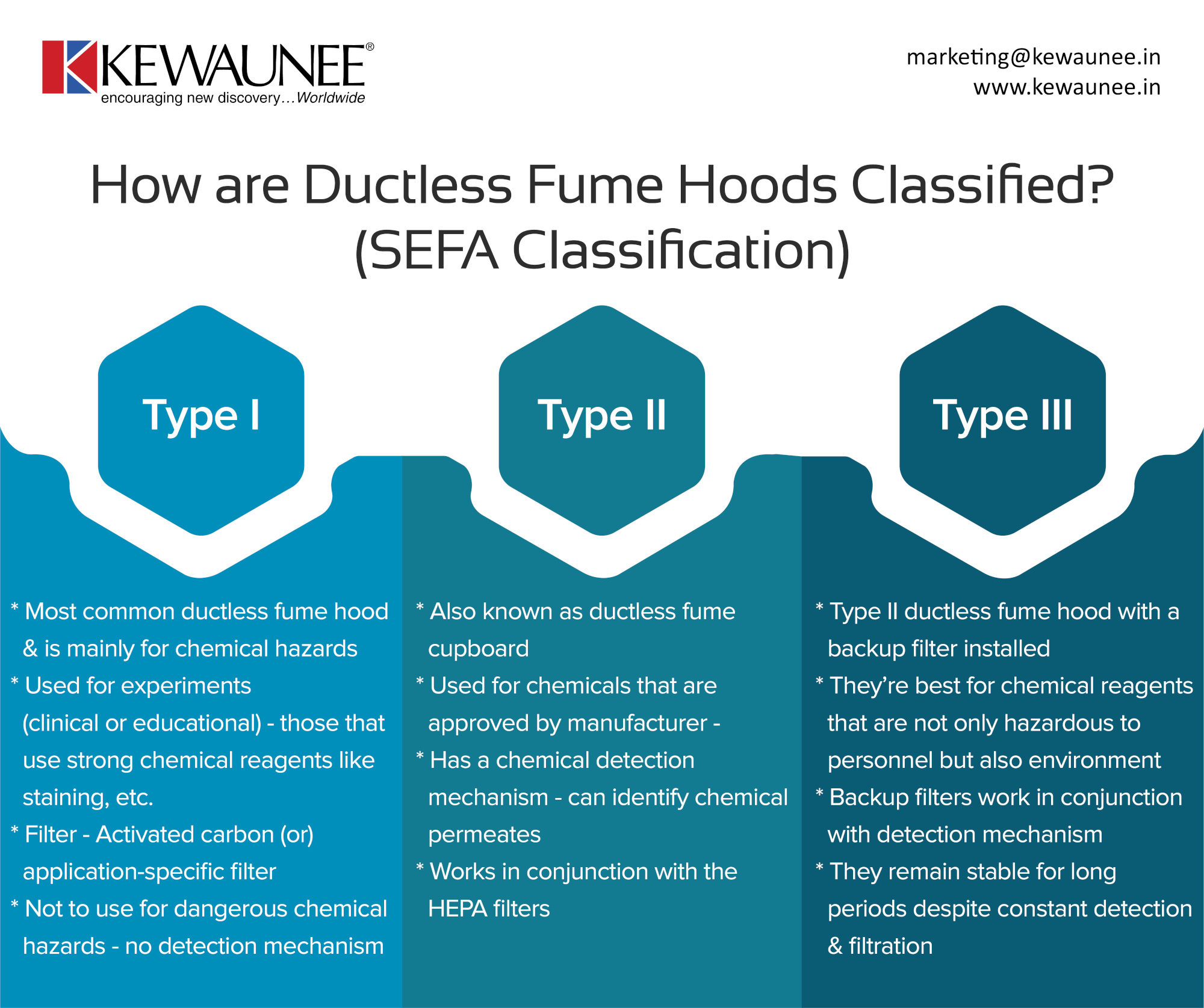How Are Ductless Fume Hoods Classified
You’ve heard about Fume hoods, but Ductless Fume Hoods are not much talked about. They’re an indispensable tool in any laboratory that works with chemical reagents. They’re known as plug & play fume hoods for a reason, and that’s because of the flexibility and adaptability that they offer.
Here, in this infographic, we’re discussing how the Scientific Equipment and Furniture Association (SEFA 9-2010) classifies ductless fume hoods & what sets them apart from each other.
If you’re looking to install ductless fume hoods in your laboratory, get in touch with us at Kewaunee International & we’ll help you pick out the best-in-class hoods in the market. You can view our current collection here.
| Types | Characterisation |
| Type I |
|
| Type II |
|
| Type III |
|
Comments are closed.











